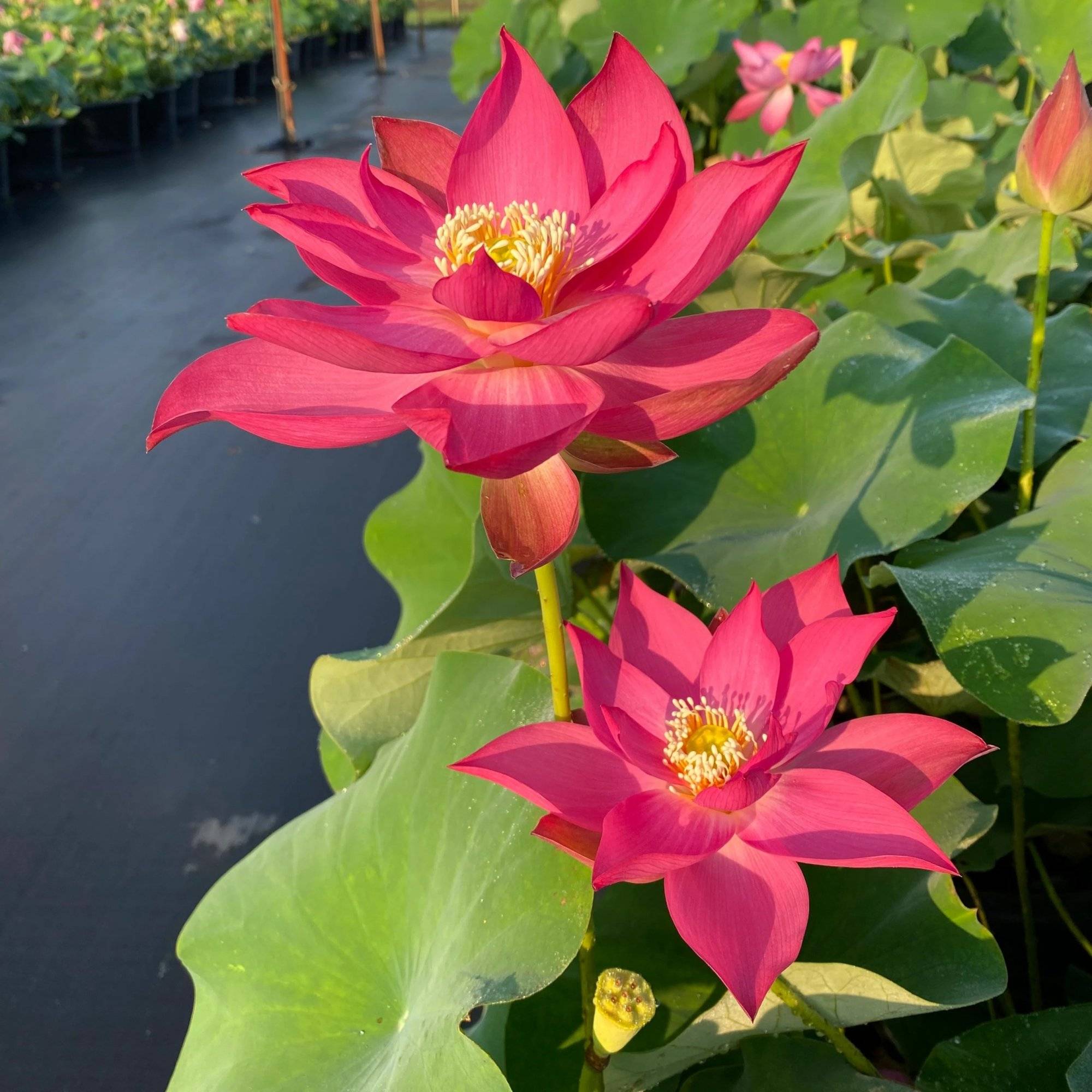Embark on a journey of botanical enchantment as we delve into the realm of lotus flowers, where elegance and serenity converge. Cultivating exquisite lotus garden blooms is a captivating endeavor that can transport you to a world of tranquility right in your own backyard.
With their mesmerizing blossoms and symbolic significance, lotus flowers have captured the imaginations of gardeners and artists for centuries. Allow us to be your guides as we unveil a treasury of expert tips that will empower you to nurture these delicate wonders with finesse. From the careful selection of varieties to understanding their unique growth requirements, we invite you to immerse yourself in the art of lotus cultivation.
Picture a scene where vibrant lotus blossoms emerge gracefully from serene ponds, their petals delicately unfurling to reveal a symphony of colors. As you embark on this horticultural adventure, you’ll witness the transformation of humble tubers into majestic plants, showcasing nature’s marvels at every stage of their growth.
Through our comprehensive guidance, you will discover the secrets behind choosing the perfect lotus varieties that thrive in your climate and sunlit embrace. Whether you reside in a tropical paradise or a cooler climate, we will equip you with the knowledge to create an environment that fosters the flourishing of these exquisite blooms.
Join us on this journey of horticultural enlightenment, where you’ll uncover the secrets to cultivating exquisite lotus garden blooms that will evoke a sense of wonder and awe in all who behold them. Immerse yourself in the tranquility and natural beauty that lotus flowers exude, and let your garden become a sanctuary where these ethereal blossoms enchant and inspire all who visit.
1. Climate and Sunlight
Lotus plants thrive in warm climates with full sun exposure. They require a minimum of six hours of direct sunlight per day. If you live in a cooler climate, you can still grow lotus in containers and move them indoors during colder months.
 Source: Pinterest
Source: Pinterest
2. Choosing The Right Variety
There are two main types of lotus plants: hardy and tropical. Hardy lotus varieties can withstand colder temperatures, while tropical varieties require warmer conditions. Select a lotus variety suitable for your climate.
 Source: Housing
Source: Housing
3. Planting Containers
Lotus plants grow best in wide, shallow containers. Choose containers with a diameter of at least 24 inches and a depth of 10-12 inches. Make sure the containers have drainage holes to prevent waterlogging.
 Source: Lewis Ginter Botanical Garden
Source: Lewis Ginter Botanical Garden
4. Quality Soil
Lotus plants prefer rich, loamy soil with a pH range of 6.5-7.5. Use a mix of heavy clay soil and well-rotted organic matter, such as compost or aged manure, to provide the necessary nutrients.
 Source: Blue Lotus Water Garden
Source: Blue Lotus Water Garden
5. Planting Depth
When planting lotus tubers or rhizomes, ensure they are placed at the correct depth. The growing tip or “eye” should face upward and be positioned just above the soil surface, while the tuber should be buried 4-6 inches deep in the soil.
 Source: Pond Megastore
Source: Pond Megastore
6. Water Requirements
Lotus plants are aquatic and require plenty of water. Keep the containers filled with water, maintaining a water depth of 2-4 inches above the soil. During hot summer months, you may need to top up the water daily to compensate for evaporation.
 Source: Gardenia.net
Source: Gardenia.net
7. Fertilization
Lotus plants are heavy feeders and benefit from regular fertilization. Use a balanced, slow-release fertilizer specially formulated for aquatic plants. Apply the fertilizer according to the package instructions, typically every 4-6 weeks during the growing season.
 Source: Unsplash
Source: Unsplash
8. Pruning and Deadheading
Remove any yellowing or dying leaves from the lotus plant to maintain its appearance and prevent rot. Deadhead spent flowers to promote continuous blooming.
2Source: Budsas
9. Winter Care
In colder climates, lotus plants enter dormancy during winter. Before the first frost, remove the dying foliage and tubers from the containers. Store them in a cool, dark place with temperatures around 50°F (10°C) until the following spring.
 Source: Chalily Ponds & Gardens
Source: Chalily Ponds & Gardens
10. Pest and Disease Control
Lotus plants are generally resilient against pests and diseases. However, keep an eye out for snails, slugs, and aphids. Use organic pest control methods or insecticidal soaps if necessary.
 Source: Pond Megastore
Source: Pond Megastore
Remember, growing lotus flowers requires patience and attention to detail. With proper care and maintenance, you can enjoy the stunning blooms and serene presence of these unique aquatic plants in your garden.
